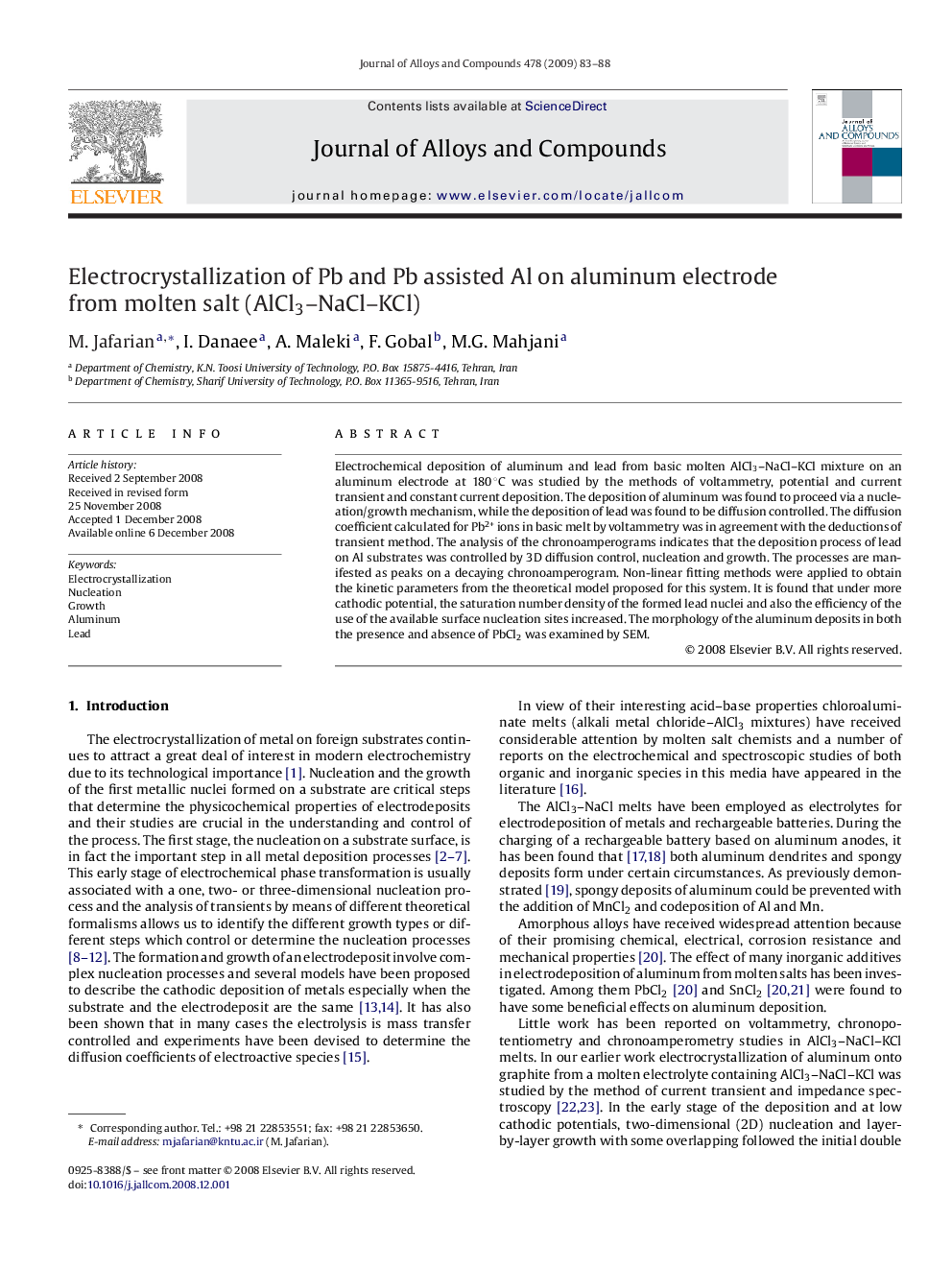| Article ID | Journal | Published Year | Pages | File Type |
|---|---|---|---|---|
| 1621942 | Journal of Alloys and Compounds | 2009 | 6 Pages |
Electrochemical deposition of aluminum and lead from basic molten AlCl3–NaCl–KCl mixture on an aluminum electrode at 180 °C was studied by the methods of voltammetry, potential and current transient and constant current deposition. The deposition of aluminum was found to proceed via a nucleation/growth mechanism, while the deposition of lead was found to be diffusion controlled. The diffusion coefficient calculated for Pb2+ ions in basic melt by voltammetry was in agreement with the deductions of transient method. The analysis of the chronoamperograms indicates that the deposition process of lead on Al substrates was controlled by 3D diffusion control, nucleation and growth. The processes are manifested as peaks on a decaying chronoamperogram. Non-linear fitting methods were applied to obtain the kinetic parameters from the theoretical model proposed for this system. It is found that under more cathodic potential, the saturation number density of the formed lead nuclei and also the efficiency of the use of the available surface nucleation sites increased. The morphology of the aluminum deposits in both the presence and absence of PbCl2 was examined by SEM.
